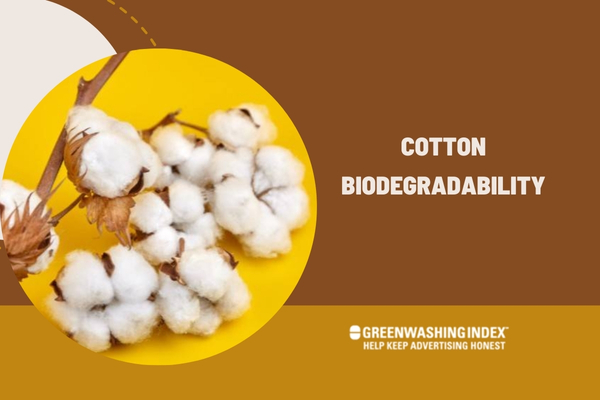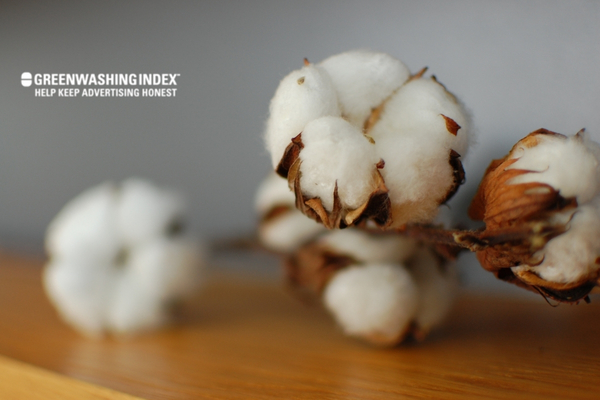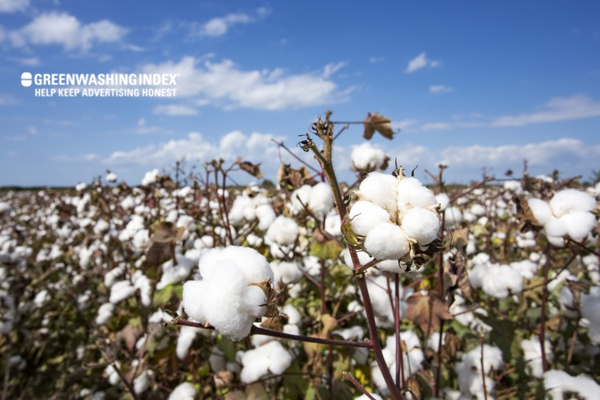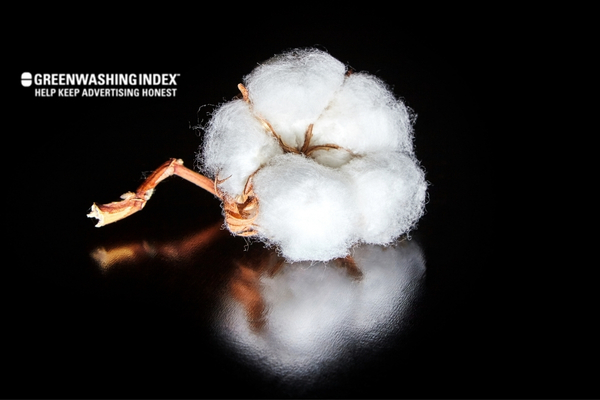

Have you ever wondered what really happens to your cotton tees and jeans when they’ve lived out their life in your wardrobe? The thought that these familiar fabrics simply return to the earth as harmless as when they arrived is comforting, but is it true?
Cotton biodegradability is a hot topic right now, and I’m diving into it headfirst. From the clothes we wear to the sheets we sleep in, cotton is everywhere. But what’s its real footprint on our planet?
When you hold a soft cotton shirt in your hands, you’re not just holding fabric; you’re holding a story of environmental impact that doesn’t always end with a clean resolution.
Is this beloved natural material truly kind to Mother Earth through its entire life cycle? Let’s peel back the layers of this fluffy fiber and see if it’s really an eco-friendly option or if there’s more beneath the surface that might surprise us.
What You’ll Learn from This Read:
When I think about how cotton gets from the field to our clothes, it’s quite a story. You might see a plain T-shirt, but I see a complex journey that affects our earth.
Cotton starts as small seeds. These seeds get planted in large fields, plenty of them. Farmers need good soil and lots of water for these seeds to grow into cotton plants.
Here is where we start seeing how cotton might trouble our environment. To grow lots of it, you often need chemicals like pesticides and fertilizers.
Pesticides keep bugs away that would eat the plants. But these chemicals can hurt good insects too and can end up in nearby rivers or lakes, which isn’t great for fish or other wildlife.
Fertilizers help plants grow big and strong. But they also can run off into water and cause too many algae to grow. This algae then uses up all the oxygen in the water, so fish and other living things can’t breathe—it’s called an algae bloom, by the way.
Once cotton blossoms, machines or humans pick it—both ways have their issues. Machines use fuel, which leads to more pollution; picking up by hand takes a lot of work and sometimes isn’t very fair to workers.
The picked cotton then goes on a journey where it’s cleaned and spun into threads before being made into whatever fabric we’ll wear.
Basically, growing cotton requires lots of work and plenty of resources like water—and sometimes not-so-nice chemicals that don’t just affect bugs but also streams, rivers, lakes… even us!
Now, let’s think about cotton biodegradability.
Cotton is natural – it comes from plants – so you’d think it would break down easily back into the earth when we’re done with our shirts or jeans.
Sure enough—it does! Cotton is part of what people call biodegradable textiles, meaning they break down naturally over time without leaving nasty stuff behind.
But here’s the twist: even though cotton breaks down after its life being worn around town ends—that doesn’t erase its environmental issues from when it was just a little seedling in those giant fields.
Think about all that water used—cotton thirsts for more than many other crops do. In places where there’s not much rainwater around? That means taking precious water from somewhere else—like rivers or underground sources—to make sure those fields stay wet enough for seeds to shoot up into fluffy white gold (which is what some folks call cotton).
So now you’ve got less water for drinking or giving those rivers life because loads are going to clothe production! It kind of makes me question if calling cotton natural means unsustainable, too…
I’ve just taken you through why there are questions surrounding whether sustainable cotton really lives up to its name when you look at its demands on resources like soil health (impaired by constant farming) and huge amounts of needed water—which is already tricky with changing climates—and chemical use that can harm everything from tiny bugs all the way out past riverbanks.
That said—this isn’t saying goodbye forever to shirts made out of soft, comfy threads! It simply underlines why thinking about where stuff comes from—like questioning “just how green my green shirt actually is’ ‘ —matters big time as we keep trying our best as one big group living on planet Earth together.
Understanding these nuances is vital, and further reading, such as this study on the biodegradability of cotton and polyester fabrics, can provide more in-depth insight into how different fabrics decompose and their impacts on our environment. This deeper dive into the scientific processes behind biodegradability helps bolster the call for more sustainable fashion choices.
Also Read: Carbon Footprint Reduction: 10+ Life-Changing Tips
Cotton is all around us – in our clothes, bed sheets, and towels. But when we talk about “cotton biodegradability,” it gets pretty interesting. So let’s dig deep into this cotton story to figure out if it’s really a friend to our environment or if there are hidden sides making it less green than we thought.

First off, let’s chat about the good stuff. Cotton biodegradability means that cotton can break down into natural elements in the environment without leaving any bad stuff behind. Here’s why many think of cotton as an eco-friendly choice:
All sounds pretty great, right? It’s like nature gives us this fabric that neatly packs its bags and leaves without fuss when we’re done with it. So, thinking about sustainable cotton has plenty of folks nodding their heads.
Now, hold on just a minute before we put a green crown on cotton’s head because everything isn’t as clear-cut as “cotton breaks down; thus, cotton is king.” There are also reasons to give pause:
See what I mean? We’ve got these opposite sides: one says, “Yay! Cotton breaks down, so cheer!” Meanwhile, another flags us down, whispering, “Don’t forget soil gets tired” or “Keep those rivers clean!”
We’ve got options like organic or “sustainable cotton” talking points stirring dialogues about dressing responsibly while keeping Mama Earth smiling (and filled up less by trash mountains).
This whole “is-cotton-an-ally-or-foe” chatter hinges on seeing both faces clearly: appreciating its ability to fade away softly but also being alert whistle-blowers where Mother Nature needs us singing louder. The deal with cotton biodegradability highlights how something so everyday mixes complexity within simplicity… yet it doesn’t change my love for cozy pajamas one bit!
Also Read: Stop Using Paper Towels: Easy Eco-Friendly Swaps!
When I think about cotton biodegradability, it’s important to look deeper into how it’s grown. There are two main types of cotton farming – non-organic and organic.
Non-organic cotton farming uses a lot of chemicals. These include pesticides to kill bugs and other creatures that might eat the plants. Here’s what happens:
Organic cotton is grown differently:
The ecosystem is happier with organic methods because everything can live better together without the harsh chemicals found in non-organic cotton farming.
When it comes to buying cotton products, labels like ‘organic’ catch our eyes. But what does it really mean?
Certified Organic:
So yes, when you see ‘certified organic’, you know that:
By choosing products with ‘certified organic’ labels, we encourage more farmers to adopt sustainable ways, which eventually leads us toward helping our planet breathe more easily!
So understanding these certifications gives us power – power as consumers – to choose items like clothing made from materials that put less strain on Mother Earth.
Remember, though, not all “organic” labels hold up the same standards; always look out for those trustworthy certifications! This way, we’re sure we’re getting something indeed eco-friendly and supporting practices behind sustainable cotton production, driving positive environmental impact.
And when thinking about how all this ties back into Cotton biodegradability– well, my friends– it’s all connected! Choosing certified organic means supporting an entire process geared towards reducing negative impacts while banking on biodegradation as nature intended!
Also Read: DIY Face Masks: Your Guide to Eco-Friendly Creations
Cotton is a vital part of our daily lives, from the clothes we wear to the sheets we sleep in. But when I think about how cotton is grown and its impact on the environment, it’s clear there are some big issues. Yet, there’s good news! There are new ways of growing cotton that might just change the game and make it more friendly to our planet.

When it comes to growing cotton in a way that is gentle on Earth, scientists and farmers have been working hard to come up with smart farming methods. These new approaches aim to use water wisely, improve soil health, and reduce harmful chemicals. Here’s what’s happening:
By using these new farming ideas, not only can we still have all the cotton products we love, but also care for Mother Earth at the same time.
Now, let’s talk about what happens when our favorite t-shirt gets too old or those jeans just don’t fit anymore. Instead of throwing them out, imagine if we could turn them into something brand new! Well, guess what? That’s starting to happen, thanks to recycling magic.
It doesn’t stop there either; tech wizards are even inventing brand-new machines that make recycling faster and cleaner than ever before.
So there you have it; folks out there are really putting their thinking caps on so your comfy pajamas won’t hurt our world when their time is up!
In today’s world, the way we choose to spend our money can speak volumes. Not only does it reflect our personal style and needs, but it also carries weight in influencing sustainable trends in the industries we support, particularly fashion.

When it comes to making a difference in the world, every single one of us has more power than we might think. The choices we make when we shop can send a message loud and clear. So, let’s talk about how you and I can play our part in this story.
When we choose to spend our money on sustainable cotton or any biodegradable textiles, it’s like we’re giving a thumbs-up for good practices. Now imagine if lots of us start doing the same thing. Companies will notice that, hey, people really care about how their clothes are made! They’ll see that using methods agreeable with nature gets them more buyers.
Let me paint a picture for you: Let’s say there’s a shirt made entirely from cotton with biodegradability in mind. It’s not just any shirt—it breaks down naturally when it’s worn out and doesn’t stay around harming nature for hundreds of years as some materials do. Now, if I buy this shirt and tell my friends why I chose it, and they buy it too… before you know it, demand goes up.
But what happens next? Well, companies aiming to make profits take note of these patterns. If they see that selling eco-friendly products is good for their wallet because it’s what people want—bam! They’ll shift gears towards being more environmentally friendly to keep up with demand.
And get this: It even starts before stuff hits the store shelves. When businesses realize shoppers prefer goods that don’t harm the planet—like sustainable cotton—they’ll begin to push farmers and suppliers to better their ways, too.
So, by making wise decisions about what we buy, we’re helping nudge along the giant machine of supply and demand toward green paths.
Now let’s talk fashion, but make it eco-friendly! What does that mean? It means looking cool while also being kind to Mother Earth!
One fabulous way is picking clothes made from 100% biodegradable fabric—like our friend cotton when farmed sustainably. But did you know there are other superheroes in the textile world, too? Hemp, linen (made from flax), organic bamboo—they all deserve high-fives for being kind on our planet while breaking down without leaving much mess behind.
So, how do you spot these eco-warriors? Sometimes, simply reading tags on clothing tells you what they’re made of, but always keep an eye out for labels like “organic” or “recycled materials.” That gives us hints that those clothes were born from processes aiming at keeping skies blue and waters clear.
And digging deeper into this rabbit hole opens up even cooler doors: second-hand shops! Yup—rocking pre-loved threads means no new resources were used, which sings tunes of happiness to dear Earth because less waste equals less strain on her shoulders.
I can also mix things up differently by fixing old outfits instead of tossing them away after a tiny rip or missing button—that way; they live longer lives; plus, I get brownie points for a unique style!
Walking down this path isn’t just choosing fabric with care; it’s saying yes to wearing values on your sleeve (literally!). Plus, there is an awesome secret—it feels pretty great knowing your stylish looks are friends with nature too!
So here’s me encouraging myself (and maybe you) every morning as I pick out my wardrobe: “Let’s dress the part today- A guardian-of-the-earth part!”
Cotton biodegradability refers to how cotton breaks down into natural elements. This happens when bacteria and other decomposers eat it up over time.
Pure cotton clothing can break down in a few weeks to several months under the right conditions. However, synthetic blends might take many years longer because they have man-made fibers.
Yes, buying organic clothes helps the environment. These items use fewer chemicals during farming and thus tend to be kinder to our planet.
Cotton biodegradability does play a significant role in tipping the scales towards environmental sustainability. When considering its journey, we see that it is both friend and foe; it offers an eco-friendly future through biodegradable textiles yet challenges us with practices that may harm the planet.
Sustainable cotton may sound like an ideal solution, but it requires understanding and action from farmers, manufacturers, and consumers.
The debate over cotton’s environmental impact highlights a broader need for responsible consumerism and stricter production standards. While innovations promise progress in cotton farming sustainability, awareness and support of these initiatives are crucial.

Don't let aphids, slugs, and caterpillars ruin another plant. Take back control with simple, natural methods that actually work.